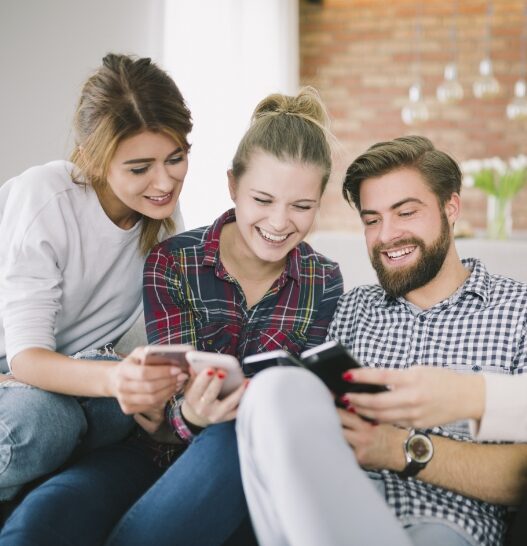The basis for the development of a successful product is a thorough understanding of the user and his typical behavior when dealing with the task or product. In order to get to know this typical behavior in a natural environment (and this environment itself), field observations are ideally suited.
So in this article we will introduce you to this research method and explain not only the advantages and disadvantages, but also the process and which questions the method answers.
What is a field observation?
In the field of user experience (UX), a field observation is a method in which researchers observe users in their natural environment and study how they use products, systems, or services. This method is often used to better understand user needs, identify problems, and identify opportunities for improvement.
However, it is not only the users that can be observed. Processes and the environment itself are also interesting factors about which there is important information to gather for product design. The interaction from these factors can also be identified here.
For example, in a UX field observation, a researcher might visit a user at home or at work and observe how he or she uses a particular software, website, or physical product.
Field observations in the UX field can provide very valuable insights because they show real user behavior in their usual context, not just what users say in a research lab or survey. They can also help identify users’ real needs and problems that they may not be able to verbalize themselves or even know they have. In addition, this can reveal interactions with other products, people or the environment that would otherwise have remained hidden.
How does a field observation work?
During field observation, (potential) users of the product are observed either using the finished product or how they currently solve the associated task without the product.
Depending on the progress in product development, different detailed prototypes can be used for this purpose. If you are at the beginning of your product development, test simple prototypes for their acceptance by the user. If you are in the middle of product development, the prototypes can be more elaborate and detailed. Click dummies are a good example of this.
Observation can be direct, with an observer on site, or indirect, with the user being recorded on video.
By systematically evaluating the observations, it is then possible to determine an ideal workflow and subsequently implement this in the product design.
A UX field observation consists of several steps, which may differ slightly depending on the specific requirements of the project. The following are typically included:
Planning: identify the research objective and the user groups to be observed. Determine where and when observations will take place, and create an observation guide that identifies key areas to focus on.
Recruit or obtain permission: If you are testing with recruited users, identify participants who represent the target user group. You should ensure that they give their consent to participate and be recorded. Of course, if you are observing in public places (e.g., a train platform), you do not need recruits for this. What you do need in this case, however, is permission to conduct the observations at the chosen location.
Conducting the observations: Visit the place where users usually use the product or service and observe how they interact. Take notes or record the session if approved.
Analysis: evaluate your observations and look for patterns, common problems, unexpected behaviors, and anything that can shed light on your research questions.
Derive design recommendations: Now you can integrate what you’ve learned about operations, processes, and users into product design. If necessary, you then test initial design solutions again with real users.
What should you pay attention to during a field observation?
The following points are particularly important (some of which you already know from the previous chapters):
You can carry out the method on site or via video.
You can observe people, processes, but also environments and collect important information about all these areas. You should already decide in advance what you will focus on during the evaluation.
Above all, if you observe users using video recordings, you must familiarize yourself with the data protection guidelines that apply there and, of course, comply with them
What are the advantages of the method?
We identified the following benefits of field observations:
- Understanding user behavior: By observing them in their natural environment, you can develop a deeper understanding of how users actually use a product or service, as opposed to what they might say in surveys or interviews.
- Identifying problems and challenges: Field observations can help identify difficulties or problems users have when interacting with a product or service. This can include technical errors, usability issues, unclear instructions, and more.
- Resulting in: discovering opportunities for improvement: By seeing how users interact with a product or service, you can discover opportunities for improvement that may not be obvious when looking only at data or user feedback.
- Better understand the context of use: Field observations can provide valuable information about the context in which the product or service is used, including environmental factors that might influence usage.
Validating assumptions and hypotheses: Field observations can be used to validate (or refute) assumptions or hypotheses your team has made about user behavior. - Data-based design decisions: Insights from field observations can be used to inform decisions in the design process, from creating personas and scenarios to designing user interfaces and selecting features.
These benefits are instrumental in creating products and services that are better aligned with user needs and preferences, ultimately leading to an improved user experience and often increased user engagement, customer satisfaction, and business success.
What are the disadvantages of the method?
Although field observation in UX research offers many advantages, there are also some challenges and potential drawbacks to consider:
- Time and resources required: field observations can be time and resource intensive, especially compared to other research methods. They often require travel to the user site, long observation times, and detailed analysis of the data collected.
- Scalability: field observations do not scale well. It can be difficult to observe a large number of users, and results from observations of a small group of users may not be representative of the entire user base.
- Lack of control: in field observations, user researchers do not have the same control over the environment and other variables as they do in a lab. This can lead to unpredictable situations and make interpretation of results difficult.
- Observer Effect: The presence of the User Researcher can influence user behavior (also known as the “Hawthorne Effect”). Users may not behave as naturally as they would if they were not being observed.
- Privacy and ethical considerations: Field observations often require obtaining informed consent and sensitive handling of personal data and recordings. It is important to respect user privacy and adhere to ethical guidelines.
- Some environments offer additional challenges: Access issues to some contexts of use can make it difficult or impossible for you to conduct field observations. For private environments, corporate campuses, and other contexts, you may be prohibited from field observations.
Despite these challenges, in many cases field observation can provide valuable insights that are difficult to obtain using other methods. However, it is important to consider it as part of a broader mix of methods and to carefully tailor the method to the specific goals and context of the project.
Field observation answers these questions
- Is my product understood by the user?
- What features do my users really need?
- How does the use of my product change over time?
- How is it that users use my product differently than intended?
- What general usability problems does my product have?
- Who are the main users of my product and how do they differ?
- Where do problems (e.g., errors, waiting, getting “lost”) occur when using my product?
- Does the design of my interface support users in their tasks?
Not the right method for your question?
In our method assistant, we have compiled the most important methods for the most typical questions. Try out the method assistant and find exactly the right method for your question.
Choosing the right method is also made easier by the decision matrix in our book on usability and user experience design. There you will also find a lot of background knowledge about the method itself as well as UX & UI in general.
Conclusion
Field observations are observations of people, processes and environments in a real usage context. The goal is to collect data about the use of solutions, products or services or about the handling of certain problems and tasks.
Let us find out together whether a field observation is the right method for your question and how a cooperation works in detail. You can find our contact details here.



